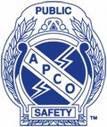By Bob Smith
APCO International Director of Strategic Development
The phrase “dispatch equipment” usually refers to the non-telephony and non-radio equipment used by frontline public safety telecommunicators to carry out the day-to-day operations of the communications center. This includes, but is not limited to, such technology as computer aided dispatch (CAD) systems, automatic vehicle locator (AVL) systems, geographic information systems (GIS) and mapping systems. These systems may come together as a package or may be purchased separately from different vendors.
Each of these systems or programs has specific functions and, with each, the communications center will need to decide which functions are necessities and which are luxuries. It is important that those making these decisions be realistic in their decision-making process and consider what is best for the agency versus what would be nice to have.
Though the needs and functions of the equipment vary depending on its purpose, some things remain the same when dealing with important issues that will need to be addressed prior to purchase.
Data Interoperability
Purchase decisions should acknowledge that new emergency communication capabilities have been defined by the Department of Homeland Security (DHS); the evolution of data interoperability that will facilitate exchanges between similar and disparate systems has become a legitimate expectation for every communications center, and information sharing in real time to best serve incident command staff, field responders of all disciplines and the public is no longer a luxury feature.
Next Generation 9-1-1
Vendors and their equipment must be ready to deal with the emerging designs of Next Generation (NG) 9-1-1 systems. Although full and complete alignment of every step in the migration to the future network is still pending, any valid proposal should address how a system will allow access and transfer of voice, data (including video), photographs, etc. between public safety and service subsets.
Interface with Emerging Technologies
Communications center managers considering the acquisition of new equipment need to plan for the use of other new and evolving technologies such as internet-protocol (IP) multimedia subsystems (IMS) and other emerging technologies that range from new variations of smart phones to non-traditional communications equipment such as gaming systems with access to Voice over IP (VoIP) service that could potentially be used to call 9-1-1 and report an emergency.
Support
Agencies should review and assess their internal support systems prior to contemplating any level of equipment purchase or upgrade. Things to consider include:
- Creation of a detailed responsibility matrix (who does what when);
- IT support – internal vs. external;
- Operational configuration – combined versus dedicated workstations (calltaker, dispatcher, etc.);
- Electrical (primary and backup) requirements, and;
- Existing network infrastructure, including remote workstations.
Though some level of technical knowledge is beneficial for these types of initiatives, it is not required for those managing today’s communications centers to be a rocket scientist. Simply knowing where to look and what to look for can go a long way to ensuring your new equipment functions properly and benefits your agency.
- Any other suggestions? Anything we missed in the list above? Leave a comment below or e-mail products@firerescue1.com with your feedback.
 |
Bob Smith is the Director of Strategic Development at the Association of Public-Safety Communications Officials (APCO) International. His almost two decades in public safety includes rising through the ranks from firefighter/EMT to captain of the department’s hazardous materials response and through the ranks of public safety communications from telecommunicator to county 9-1-1 Director. Along the way, he’s been actively involved in emergency management on the state and local levels, served as a nationally registered EMT, a College Campus Safety Officer, an EPA-certified hazardous materials technician and a liaison to the US Secret Service and US Capitol Police. A world-renowned lecturer and subject matter expert in the public safety arena and author of “Active Shooter Incidents for Public Safety Communications,” “The Telecommunicator’s Role in Homeland Security” and other public safety-oriented texts, Bob has been featured in interviews with NBC, ABC News, USA News and the Associated Press among others.
APCO International is the world’s largest organization dedicated to public safety communications. More than 15,000 members rely on APCO for their professional needs – from examining standards and issues to providing education, products and services. It is a member-driven association of communications professionals that provides leadership, influences public safety communications decisions of government and industry, promotes professional development, and, fosters the development and use of technology for the benefit of the public. Its subsidiaries include the APCO Institute, Automated Frequency Coordination and the Public Safety Foundation of America.












